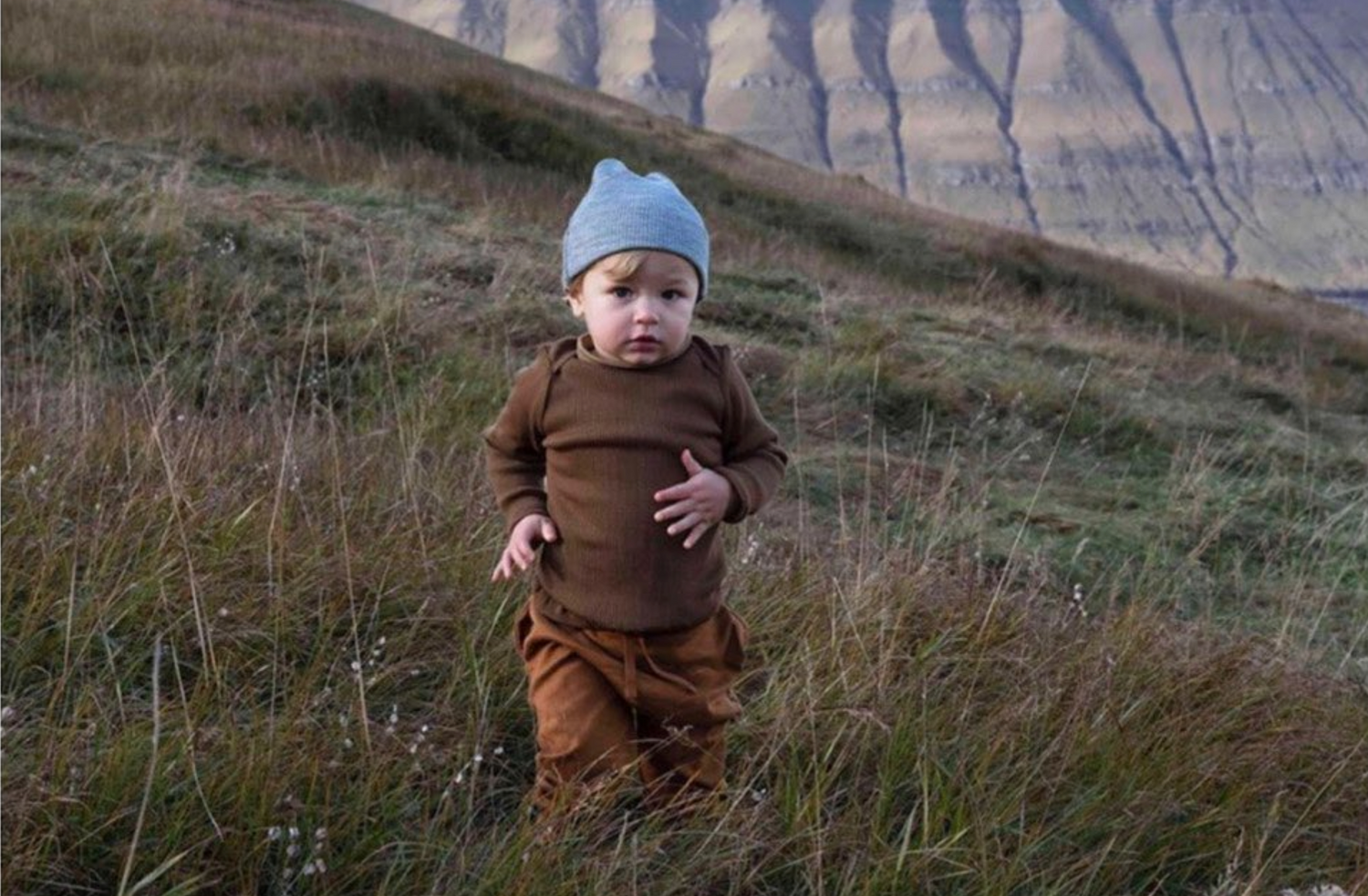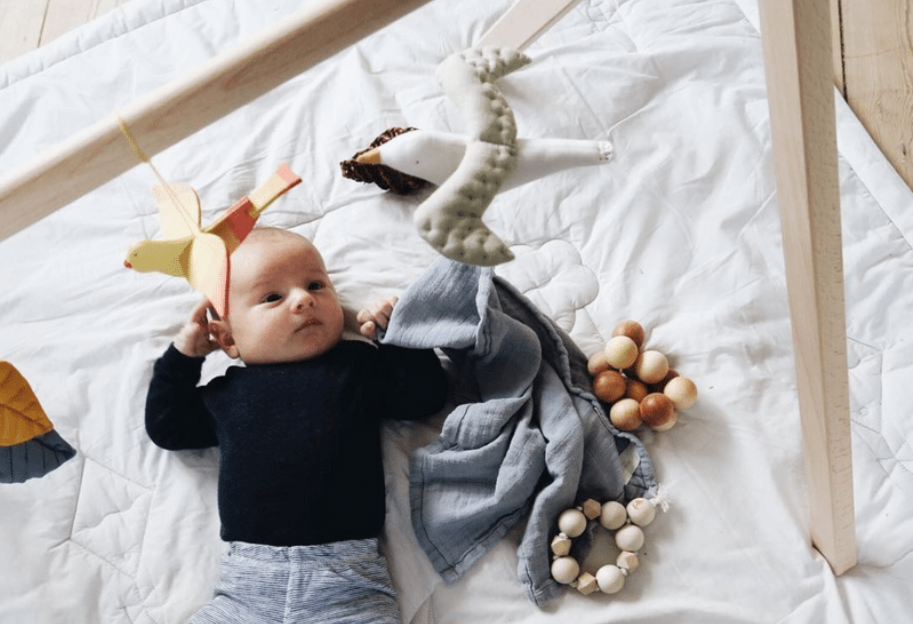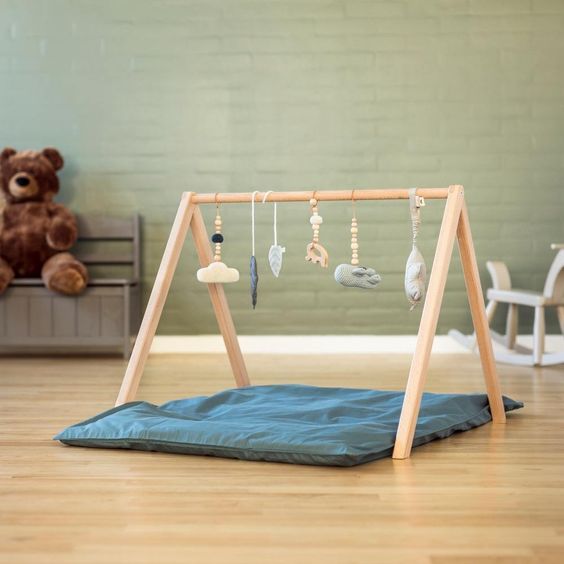
This wool guide gives you an insight into the most common types of wool. You will learn how to best wash and maintain your wool. Last but not least, we talk about how wool can provide better sleep.
Several types of wool - which should I choose?
If you are looking for wool for the children, you will certainly come across different types of wool. Can one be as good as the other? Find the answer here, where we review the most used types of wool.
What is merino wool?
Merino wool comes from the merino sheep. Merino wool is especially known for not scratching, as some types of wool can. Already there, it is the perfect wool for underwear, T-shirts and the like.
The dense and short wool with thin fibers is extra soft and durable. Therefore, it is often merino wool that we use in everyday life. It can last for a while and is nice to wear.
What is cashmere wool?
Kashmir wool is the exclusive wool. It comes from goats in the Himalayas and is sought after all over the world.
Cashmere wool is a very fine, soft and scratch-free wool, but it is also fragile. Therefore, it is not for everyday use.
What is alpaca wool?
As the name suggests, alpaca wool comes from an alpaca - the animal from the Andes that resembles a llama.
Alpaca wool is particularly known for its temperature-regulating properties. It is a warmer wool, which makes good sense in the winter wardrobe. It differs from the other types of wool by being lighter than sheep's wool and more durable than cashmere wool.
How to wash wool?
It is indeed a frequently asked question. How do you wash that wool without it shrinking to doll size or taking a day and a half of hand washing and air drying?
It is true that there are types of wool that must be hand washed, but you can avoid them by checking the washing instructions before you buy wool. It doesn't have to be a big project to keep the woolen clothes clean, but wool must be handled with love.
Read along here if you want to know how to wash wool in a gentle and smart way.
Wool with self-cleaning properties
Most wool can be washed - often also in the washing machine.
However, the woolen clothes will last longer if you avoid washing them, but just clean the air outside in humid weather. Wool has a natural self-cleaning effect, so if it is not dirty with dung, you can easily freshen it up by hanging it out on the string for a few hours, for example right after a good downpour, when the moisture hangs in the air.
If there is no rain in sight, you can try taking the woolen clothes into the bathroom next time you shower and leave them hanging while the moisture fills the room. It can also make a difference.
Wool program and wool detergent
Sometimes woolen clothes just need to be washed, that's how it is. Fortunately, most wool can be washed on the wool program in the washing machine or simply at 30 degrees.
Here you can advantageously use wool detergent or wool treatment with lanolin, also called wool shampoo. Wool naturally contains lanolin, but the trip in the washing machine slowly eats away at it. Therefore, it is a good idea to add a little lanolin with each wash through the detergent. It helps to preserve the wool's natural properties: breathability, moisture absorption and temperature regulation.
If the washing machine has a wool program, the temperature is adjusted for you, but if you start washing wool by hand, you must ensure the right temperature yourself. Go for lukewarm water for washing wool - neither too cold nor too hot.
If you have a piece of natural colored woolen clothing with stains that cannot be saved, you can try soaking the clothing in a pot of strong coffee. Stir a little so that the color is distributed. If you're lucky, you'll both camouflage the stains and give the clothes a modern caramel colour.
The wool duvet can be washed and air dried
When it comes to the wool duvet, it is often enough to air dry, but once in a while the need arises to give the children's duvet a ride in the washing machine, that is clear.
Our wool duvets for babies and juniors can be washed in the washing machine at 30 degrees with wool detergent. They are best dried outside on the clothesline and should preferably not be knocked, vacuumed or tumble dried. Just let the quilt hang and take care of itself in the wind until it is thoroughly dry.
Arctic & Nordic Textiles has many years of experience with duvets and recommends letting the woolen duvet steam off before making the bed in the morning. Give the indoor climate in the bedroom a hand by turning the duvet aside in the morning so that the night sweat from the body evaporates. If you are in the process of airing it out anyway, you can advantageously throw the duvet up on the windowsill so that it gets a little extra fresh air.
A duvet that is shaken and aired regularly rarely needs washing. However, remember to keep the cover on the duvet if you air dry outside in sunny weather. The fine wool filling does not do too well to be scorched in the heat of the sun.
The wool duvet provides better sleep
Does it sound too good to be true? Better sleep is of course a complex quantity, but the duvet is certainly not without significance for how well we sleep.
According to midwife and sleep counselor Karen Kildahl, the body's temperature must be lowered by one degree in order for us to fall asleep and sleep well. That's why we lie around like rotisserie chickens on hot summer nights. The heat keeps us awake even when we are tired.
One of the prerequisites for a good night's sleep is that we are neither too cold nor too hot. Here, the wool duvet has several strong properties that help maintain a comfortable temperature under the duvet.
Wool is a breathable material that wicks moisture away from the body and helps regulate body temperature.
It is especially important to think about temperature regulation with small children who sleep a lot. Their body temperature is not regulated in the same way as older children or adults. That's why you need a duvet that regulates the temperature and keeps the bed dry and warm.
When choosing a duvet for your child, the choice is often between down, fiber or wool. What should you choose? We have made one duvet guide, which helps you choose the right duvet for your child.
Here we can reveal that when it comes to temperature regulation, the wool duvet from the hand of nature is one step ahead. Wool regulates cold and heat at a level that neither fiber nor down can match. Therefore, the wool duvet is also an excellent choice for an all-year-round duvet.
If you have a baby who sleeps in a wax bag, you must be aware of whether it gets too hot with the woolen duvet in the wax bag over the summer. The National Board of Health recommends to keep an extra eye on small children under the age of 1 in relation to temperature regulation. Babies typically move less when they sleep and don't necessarily react themselves if they get too cold or too hot.
The Danish climate is changeable and requires attention. This is precisely where the wool comes into its own with its ability to transport moisture and keep the body dry - both on warm summer days and on cold winter nights.



Leave a comment
This site is protected by hCaptcha and the hCaptcha Privacy Policy and Terms of Service apply.